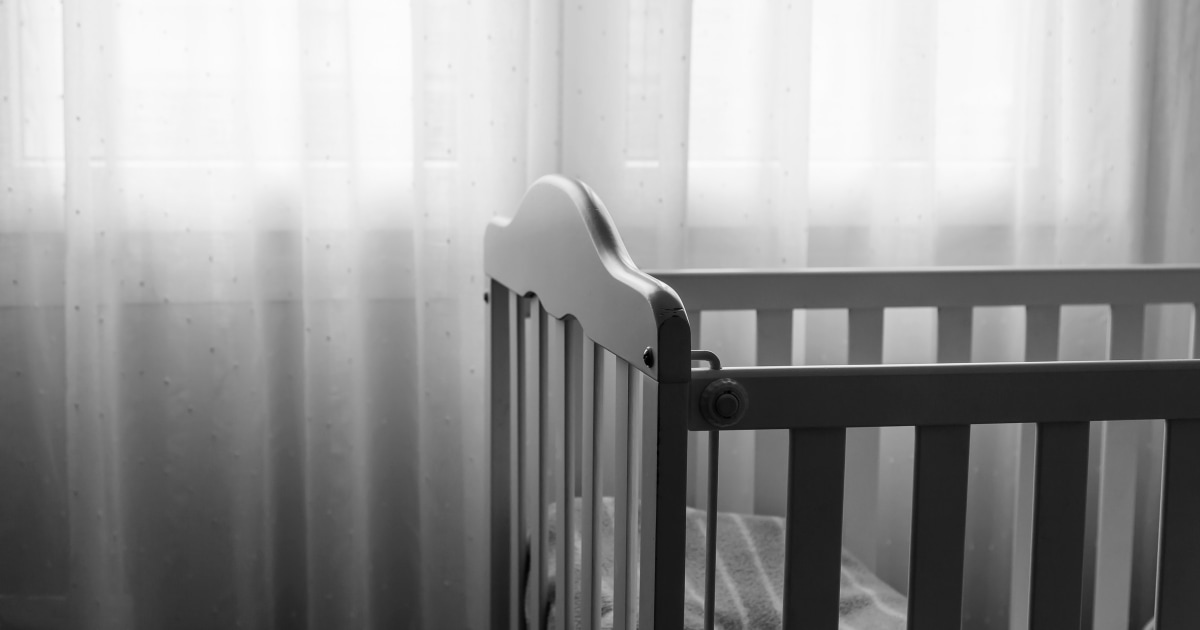
Sudden infant death syndrome, the unforeseen and unexplained death of a baby younger than one year old, is by definition a mystery. But researchers are getting closer to understanding some of the risk factors and mechanisms that contribute to SIDS.
The prevailing theory points to three possible factors: First, the infant is at a critical stage of development during the first year of life. Second, the baby is exposed to a stressor, such as sleeping face down, which can lower the amount of oxygen in their blood while raising the level of carbon dioxide. And third, the infant has an underlying abnormality that makes it harder to survive that traumatic event.
A study published Thursday in the Journal of Neuropathology & Experimental Neurology points to one such abnormality.
Researchers from Boston Children’s Hospital and Rady Children’s Hospital in San Diego found that a particular brain receptor likely involved in helping babies gasp for air was altered in some infants who died of SIDS. The receptor in question is part of the serotonin system, which plays an important role in regulating involuntary body functions like heart rate, breathing and blood pressure.
SIDS usually happens during an infant’s sleep, and though it’s rare, it’s the leading cause of death among babies between one month and one year old in the U.S. The Centers for Disease Control and Prevention attributed nearly 1,400 infant deaths to SIDS in 2020.
To better understand the condition, the researchers behind the new study examined brain tissue from 58 infants who died of SIDS between 2004 and 2011, then compared those samples to the brain tissue of 12 infants who died of other causes, such as pneumonia or heart disease. The results showed that the babies who’d died of SIDS were more likely to have an altered version of the serotonin-related brain receptor than the control cases.
Robin Haynes, the study’s lead author and a researcher at Boston Children’s Hospital, said that babies normally have a protective response that prompts them to gasp for air when they don’t get enough oxygen during sleep.
“They arouse and they go through what’s called auto-resuscitation, where it kick-starts breathing,” she said.
With SIDS, however, that response may not kick in, perhaps because of the altered brain receptor. If an infant is unable to restore their breathing and heart rate, that can hinder blood flow and oxygen supply.
A range of theories about SIDS
The Boston-based research group behind the new study has been investigating the relationship between SIDS and serotonin for about three decades, and has published multiple papers based on various analyses of the same brain tissue samples.
Those samples are some of the only ones available to SIDS researchers. But that small sample size makes it hard to draw strong inferences about potential causes or risk factors, according to Dr. José Javier Otero, director of neuropathology at The Ohio State University College of Medicine.
“It’s almost, from a scientific standpoint, courageous to attempt to even try to make a conclusion,” Otero said.
Still, researchers have long suspected that serotonin plays some role in SIDS given its association with breathing.
“It makes total sense that serotonin should be a key player,” said Dr. Debra Weese-Mayer, chief of the pediatric autonomic medicine division at Lurie Children’s Hospital of Chicago. “The question is: Is it the only player?”
It’s likely that genetics also affects an infant’s vulnerability to SIDS, though scientists aren’t sure in what capacity, Weese-Mayer said.
Another factor may be infections that infants contract early in life, according to Dr. Michelle Caraballo, a pediatric pulmonologist at Children’s Health in North Texas and an assistant professor at UT Southwestern.
“Rates of SIDS are highest in the winter. That’s also when we see the highest rates of viral infections in babies,” she said.
How parents can lower their baby’s risk
No tests exist to reveal whether a baby has an underlying predisposition to SIDS — and since no causes have been confirmed, there are no treatments to lower an infant’s risk. But Haynes said researchers haven’t given up on that prospect.
“Once you identify an infant with a particular abnormality, the goal one day is to have a preventative therapy, but what that looks like yet we can’t say,” she said.
There are still ways to protect against SIDS, however.
The CDC recommends that parents place sleeping babies on their backs at all times. A baby’s sleep area should be firm, flat and free of soft toys and bedding such as blankets, pillows and bumper pads. Parents shouldn’t cover their baby’s head during sleep time, and babies should ideally sleep in the same room as their parents until they’re at least 6 months old.
The American Academy of Pediatrics also suggests giving babies a pacifier at nap time and bedtime once they’re comfortable breastfeeding.
Breastfeeding has been shown to lower the risk of SIDS, while using alcohol or tobacco while pregnant can raise the risk.
“We do want people to follow the safe sleep guidelines as much as possible,” Caraballo said. “The really scary thing is that it is possible to do everything right and the baby still to die. At the end of the day, we don’t know the exact cause of death in the majority of cases.”






